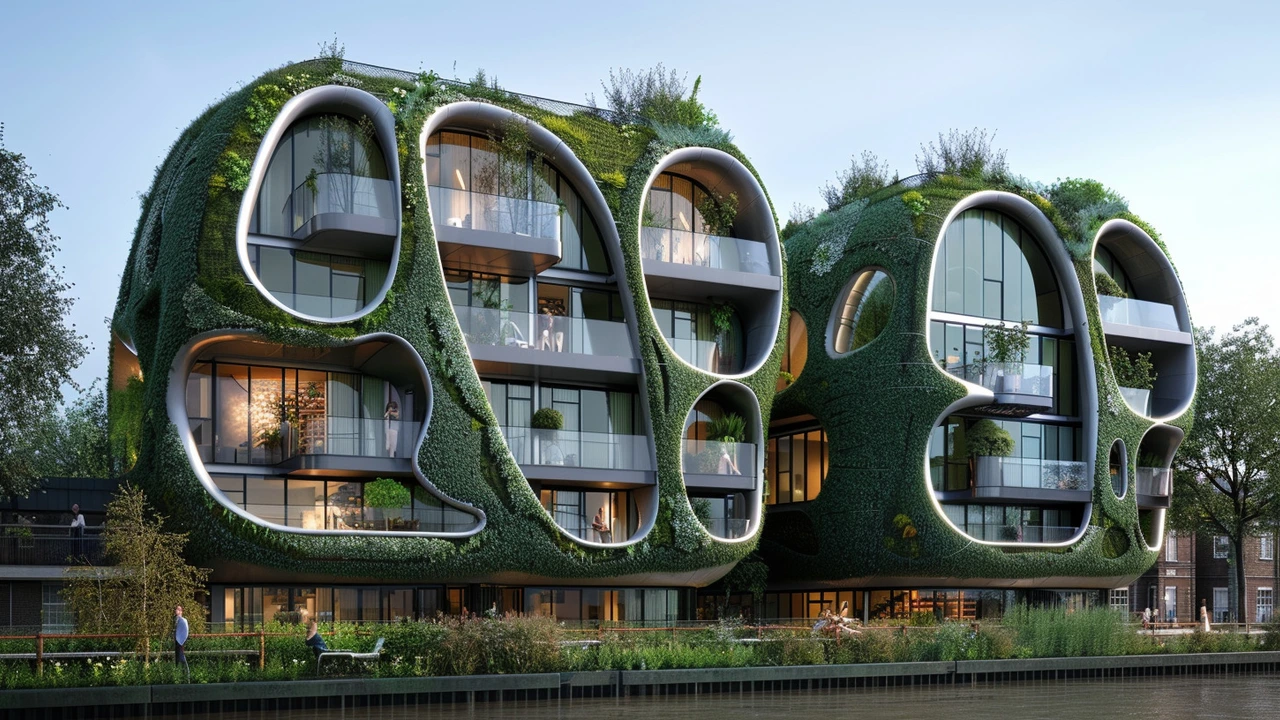Neo-Futurism in Urban Development: A Pathway to Sustainability
 Apr, 13 2024
Apr, 13 2024
Unlocking the Principles of Neo-Futurism in Urban Planning
As cities continue to grow and evolve, the challenge of making them sustainable and livable has never been more critical. Neo-Futurism, a movement that merges the very best of advanced technology with unique aesthetic designs, stands at the forefront of addressing these challenges. Unlike traditional urban planning methods, Neo-Futurism offers a vibrant, visionary approach that reinvents city landscapes for the 21st century and beyond. It draws inspiration from cutting-edge innovations, emphasizing not just functionality but also the emotional and social impacts of design.
At its core, Neo-Futurism is about breaking the mold of conventional architecture and urban planning. It seeks to create spaces that are not only environmentally friendly but also visually striking and emotionally engaging. This movement goes beyond merely incorporating green spaces or using sustainable materials. It involves a holistic view of urban development, blending various elements—technology, ecology, society, and aesthetics—into a cohesive whole. Through this, Neo-Futurism paves the way for cities that can adapt and thrive amidst the challenges of climate change, population growth, and rapid technological advancements.
One of the hallmarks of Neo-Futurism is its emphasis on adaptability and resilience. Projects under this paradigm are designed with future needs in mind, ensuring that urban spaces can evolve with the changing demands of society. This forward-thinking approach not only makes cities more sustainable but also more resilient to unforeseen challenges, whether they be environmental, economic, or social in nature.
Benefits of Neo-Futuristic Designs in Sustainable Urban Development
Delving into the tangible benefits of Neo-Futurism reveals a multitude of ways in which this approach revolutionizes urban development. First and foremost among these is the significant reduction of carbon footprints through innovative architectural designs and energy-efficient technologies. Neo-Futuristic buildings often incorporate renewable energy sources, smart technology, and natural cooling systems that contribute to a substantial decrease in energy consumption and greenhouse gas emissions.
Furthermore, this approach enhances urban biodiversity and green spaces, contributing to healthier and more vibrant city environments. Through the integration of vertical gardens, green roofs, and other green infrastructure, Neo-Futurism promotes the well-being of urban residents by improving air quality, lowering temperatures during hot summer months, and creating peaceful green oases in the heart of bustling cities.
Beyond ecological benefits, Neo-Futurism also plays a pivotal role in shaping the social fabric of urban areas. By designing spaces that encourage interaction, creativity, and inclusivity, Neo-Futuristic architecture fosters a sense of community and belonging. It's not just about creating stunning visual landmarks; it's about building environments that resonate on a personal and communal level, promoting social cohesion and enhancing the quality of life for all citizens.
Real-World Applications and Future Perspectives
In cities around the globe, we can already witness the transformative impact of Neo-Futurism. Iconic structures and urban projects, from verdant skyscrapers to sprawling eco-friendly cities, exemplify the movement's potential to reshape our urban landscapes.
Take, for example, the Bosco Verticale in Milan, Italy, a pair of residential towers that embody the essence of Neo-Futurism. These skyscrapers are cloaked in a living, breathing layer of trees and plants, demonstrating how urban developments can harmoniously coexist with nature. Not only do these buildings enhance the city's aesthetics, but they also provide significant ecological benefits, such as absorbing carbon dioxide, producing oxygen, and offering a habitat for local wildlife.
Looking towards the future, the principles of Neo-Futurism offer a blueprint for creating cities that are not just sustainable but also adaptable and resilient. As technology continues to advance, so too will the opportunities to integrate even more innovative solutions into our urban environments. Whether it's through the development of smart cities powered by AI and IoT or the creation of living buildings that can repair themselves, the possibilities are endless.